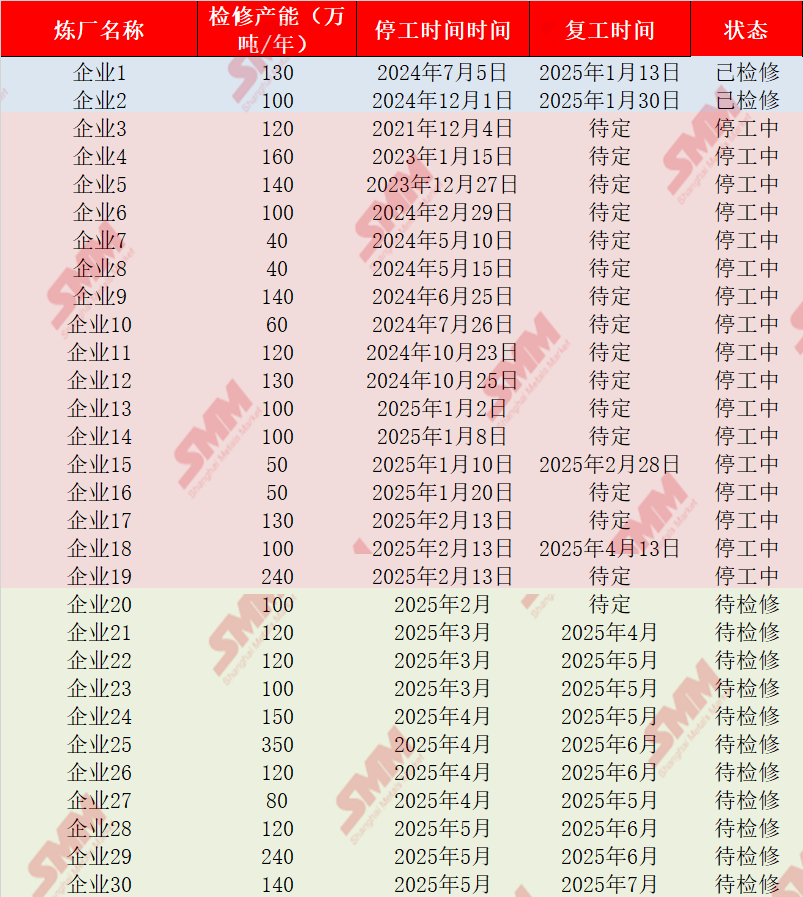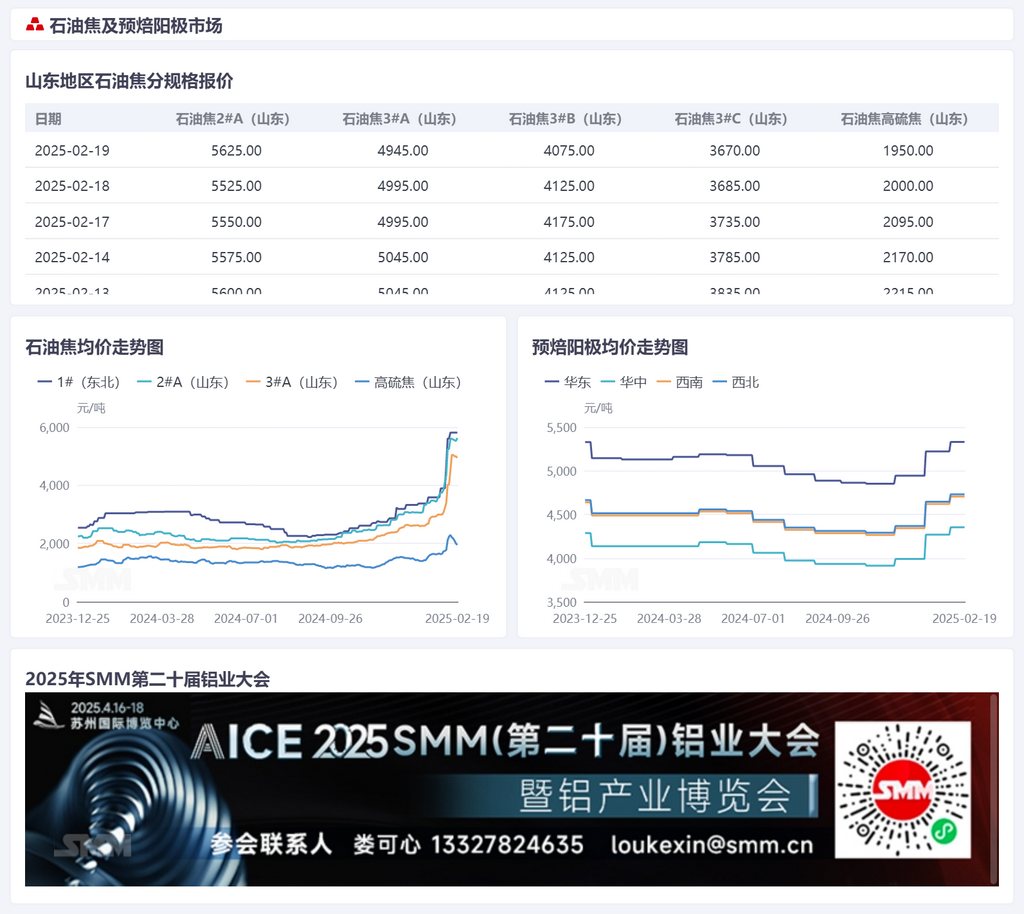






SMM, February 19:
After the Chinese New Year, the petroleum coke market surged dramatically, exhibiting an explosive upward trend. Prices of all petroleum coke products soared significantly, drawing considerable attention. This price surge was driven by the tightening domestic refinery supply side, coupled with robust restocking activities by downstream enterprises after the holiday, which provided strong support for market prices.
Supply side, domestic petroleum coke supply faced severe challenges, primarily due to rising refinery costs. Since January 2025, a series of policy adjustments have significantly impacted refinery operations. The import tariff rate for fuel oil increased from 1% to 3%, and the deductible proportion of fuel oil consumption tax was sharply reduced from full deduction to a range of 50-60%. Market sources indicated that these policy changes would directly lead to an increase in corporate tax costs by 600-700 yuan/mt. Meanwhile, restrictions on the docking and unloading of imported vessels at certain ports in Shandong continued to ferment, affecting expectations for gasoline and diesel supply and increasing costs in raw material procurement and product transportation. Additionally, with the advancement of the "dual carbon" goals, refineries needed to invest more in energy conservation, emission reduction, and equipment upgrades, further exacerbating cost pressures.
Under the heavy pressure of high costs, production cuts and shutdowns of delayed coking units became increasingly frequent. As of February 19, SMM data showed that there were 17 instances of maintenance on existing delayed coking units in China, involving a total capacity of 18.2 million mt/year, accounting for 12.27% of total capacity. Compared to the same period in 2024, the shutdown capacity of delayed coking units increased by approximately 5 percentage points. Moreover, there are plans for 11 more shutdowns and maintenance in H1, involving a capacity of 16.4 million mt/year. Among the existing maintenance units, the proportion of production for low-sulphur petroleum coke was about 41%, which is expected to rise to 48% in future shutdown plans. This indicates a continued tightening trend in domestic petroleum coke supply, especially for medium- and low-sulphur grades. In the short term, due to unresolved raw material cost issues and limited implementation of new capacity expansion plans, this tight supply situation shows no signs of significant relief, thereby providing some support for petroleum coke prices.

Demand side, active restocking by anode material enterprises played a decisive role in driving petroleum coke prices upward. It is understood that the proactive stockpiling by anode material enterprises was mainly due to two reasons: first, the strong growth momentum in the end-user NEV market instilled confidence in future market demand, prompting these enterprises to prepare raw material inventories in advance; second, after previous industry adjustments, inventory levels of anode material enterprises were relatively low, leading to strong restocking demand after the holiday. The active market participation of anode material enterprises drove a sharp rise in low-sulphur petroleum coke prices, rapidly boosting market sentiment. On the other hand, prebaked anode enterprises, another major downstream sector of petroleum coke, showed high enthusiasm for stockpiling and restocking after the holiday. The continued bullish market outlook further intensified their stockpiling sentiment. Notably, in 2025, downstream aluminum enterprises of prebaked anodes are expected to maintain a growth trend, which will further increase demand for prebaked anodes and, consequently, petroleum coke. Overall, the continuous increase in demand provided strong and sustained momentum for the rise in petroleum coke prices.
After the Chinese New Year, the petroleum coke market experienced an explosive price surge driven by the dual factors of tightening supply and robust demand. However, as petroleum coke prices rose rapidly, downstream enterprises developed a fear of high prices, leading to a noticeable decline in buying sentiment, resulting in a differentiated price trend during the week. Among mainstream refineries, sales performance was moderate. Leveraging their brand advantages and relatively stable customer base, they managed to maintain a good sales rhythm under the tight supply environment, enabling them to push petroleum coke prices further upward. In contrast, some local refineries faced poor sales due to weakened buying sentiment from downstream enterprises. To promote sales, they had to lower prices, causing petroleum coke prices to decline. Nevertheless, in the short term, the tight supply situation for petroleum coke is unlikely to ease significantly. Coupled with strong long-term demand and support from just-in-time procurement by downstream enterprises, SMM expects petroleum coke prices to remain at high levels in the short term.

For queries, please contact William Gu at williamgu@smm.cn
For more information on how to access our research reports, please email service.en@smm.cn